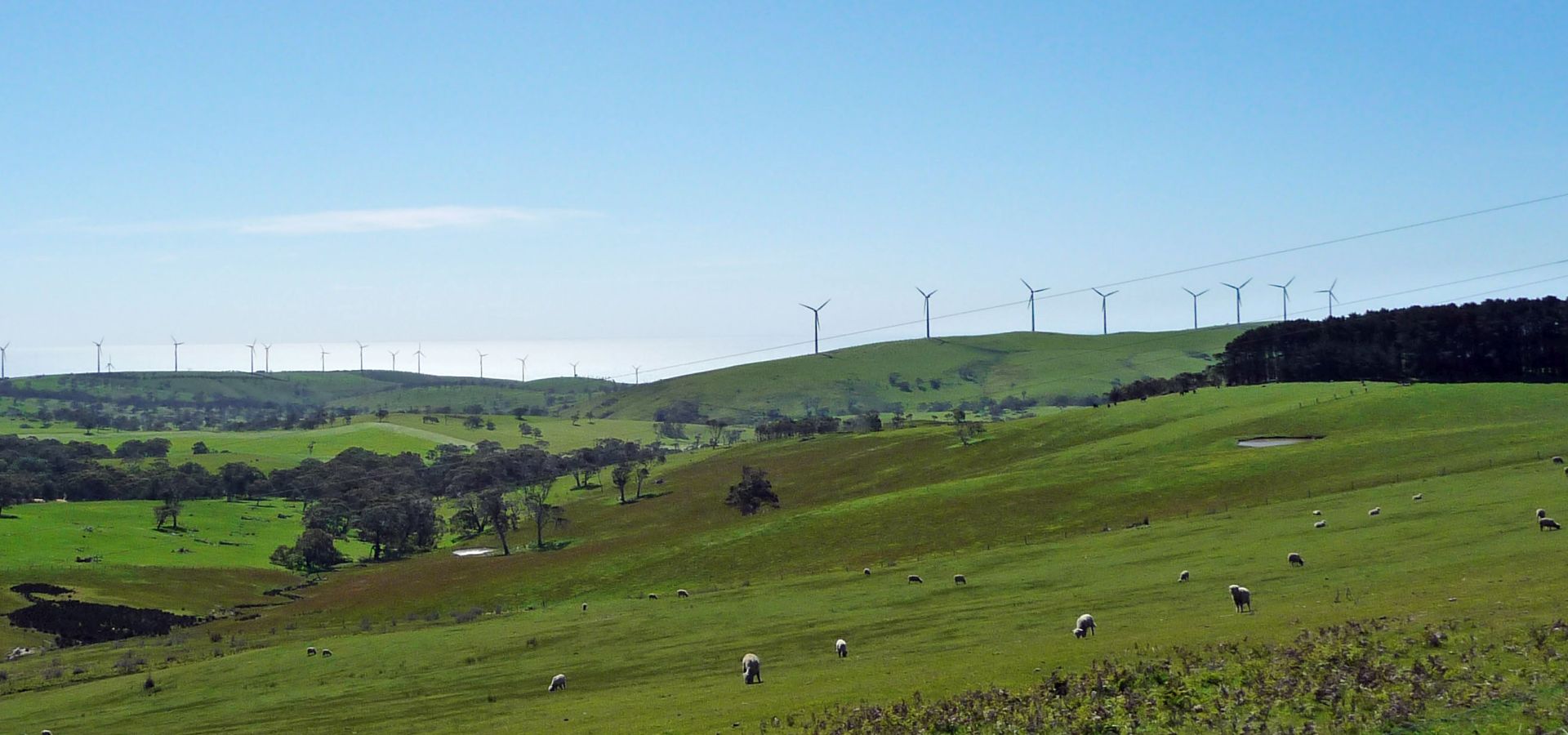The shared economic benefits of wind farm development in Australia could deliver an estimated $10.5 billion back to regional communities, a new report has found. In addition, over 6,000 local jobs could be created. Sophie Vorrath takes a look.

Wind power delivers enormous benefits to rural communities (Photo by Christine Painter CSIRO, edited, CC BY 3.0)
The report, published by the Australian Wind Alliance on Monday, marks the first major coordinated effort to list and detail the direct and indirect financial and social benefits to Australia’s regional communities from wind power.
It finds that, so far, wind energy has delivered a $4 billion boost to Australia’s regional economies, with an increasing portion of that going directly to host communities via a range of so-called “benefit sharing mechanisms” (BSM).
Currently, the report says, between $19 and $21.5 million a year goes directly to communities through BSMs. But with another 14 more wind farms currently under construction, that annual figure is expected to increase to between $30 and $32.5 million, and stretch out to $10.5 billion over the projects’ 25-year lifetime.
As RenewEconomy reported here, “benefit sharing” has become central to the wind development process in Australia, as part of an industry-wide acknowledgment that a project’s success begins and ends with community engagement.
It can include such measures as setting up a community enhancement fund (CEF), where some of the profits of the project are reinvested back into the community, and “rental” payments to landholders – and their neighbours – of the wind farm site.
In Victoria, the state Labor government has gone as far as to incorporate a community engagement and benefit sharing component into in its state renewable energy auction – as both an eligibility requirement and an evaluation criteria for bidding projects.
According to AWA national coordinator Andrew Bray, more states should be following suit.
“Australia’s 82 operational wind farms are delivering significant financial and social benefits to their host communities,” Bray said in comments on Monday.
“With COAG due to consider the National Energy Guarantee (NEG) later this week, it’s crucial states insist on the right policy settings to make sure this boom continues and delivers even greater benefits for rural communities.”
The alternative, as Victorian government energy policy advisor Katrina Hermann told last month’s Wind Industry Forum, is the kind of “unravelling of community support for large-scale wind” that her state experienced from around 2009, and that almost brought the industry undone.
“(A wind farm is a) utility-scale infrastructure that’s going into local communities that they may never have expected,” Hermann said. “And it’s also influenced by ideology and politics.
“From government’s perspective, we see (community engagement and benefit sharing) as a strategic, clever way to gain local support.
“If we can get local communities to want these things, see the benefits, feel that they can influence them, they understand how to do it – that there are a range of benefits to these things coming into their area – then perhaps we can take some of the politics out of renewable energy,” she said.
As the report notes, Australia currently has no legislated requirements for CEFs, which has led to enormous diversity in the form, function and size of funds from region to region and project to project. In some of the common CEFs, a set amount of funding per year is made available to local communities during the operational life of the project, perhaps based on its installed megawatts, or number of wind turbines. A number of projects, however, have devised unique ways to share funds with the broader community, the report says, citing the Bodangora Wind Farm in central NSW as an example.
“(Bodangora) has committed 2 per cent of the income from a single wind turbine to a CEF each year in addition to a per wind turbine commitment. This means the community effectively takes a stake in the wind farm’s performance, enjoying its success in the good years but also exposing a portion of its income to downturns.”
But even without government legislation, the AWA report found that from 2019, CEFs alone are expected to make $2.5 million a year available for regional community projects.
And if the 70-plus wind farms in the development pipeline are constructed, more than $7 million could flow into regional communities through CEFs each year, the report says.
On a broader scale, the report notes that wind farm construction has delivered almost $4 billion to regional Australian economies, over half of which has happened in the last five years.
Current wind farm construction projects are expected to inject a further $1.6 billion.
In terms of jobs, the report finds that the 2GW of new wind farm capacity currently under construction have created an estimated 1,950 in direct local jobs and a further 4,500 indirect jobs in local businesses that supply to the projects.
Sophie Vorrath is Deputy editor of RenewEconomy.com.au and writes about climate and energy.
This article has been republished from RenewEconomy.